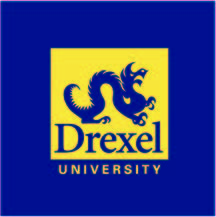Research
Research Interests & Current Projects
Our research interests include modeling, analysis and control of nonlinear, parameter-dependent hybrid systems with specific applications to electric power systems and power plants, aircraft, spacecraft and ground and ocean vehicles.
We focus on modeling and computational issues, with frequent collaboration on experimental and real-time control projects. In recent years, we have continued our work in symbolic computing and have an increasing focus on control issues associated with safety and reconfigurable control.
Symbolic Computing Tools for Dynamics & Control
Ongoing research into symbolic computing methods for multibody mechanical systems modeling and nonlinear and adaptive control system design. Current work is focused on nonlinear geometric control and hybrid systems.
Since the Mid-1980's this line of inquiry has focused on developing symbolic computing tools for engineering application in the areas of dynamical system modeling and analysis (including bifurcation analysis) and control system analysis, design and implementation.
Specific applications in spacecraft, robotics, ground vehicles, flight control and power systems have provided much of the motivation. These problems involve the careful integration of symbolic and numerical computing. Recent developments exploit powerful general purpose symbolic algebra languages, specifically Mathematica (ProPac) and Maple ( VST)
Flight Control & Flight Safety
Nonlinear Flight Control
The goal of this work is to develop methods & software to support the application nonlinear analysis and control theory to high-speed commercial air transport research. Recent efforts have focused on symbolic assembly of nonlinear, parameter-dependent models, construction of linear families of models, dynamic inversion via symbolic computing, and bifurcation analysis.
Flight Safety
Loss-of-control (LOC) is almost always a factor in the chain of events leading to a fatal aircraft accident. Our research is focused on an understanding of the mechanics of LOC in unimpaired and mpaired aircraft, the design of strategies for preventing LOC as well as strategies for recovery from an LOC event.
Power Systems
Hybrid Dynamics and Control of Power Systems
This work consider the power systems as "hybrid" systems in which discrete and continuous dynamical subsystems interact. Such a perspective is needed Current work is focused on approaches and computer tools for the design of estimators and control systems.
Power System Security Supervisors
This project investigates the synthesis of supervisory controllers for power system security applications in the framework of discrete-event systems (DES). In this context, the supervisor tries to prevent the occurrence of undesirable event sequences that can lead to system failure. More info
Power System Dynamics & Stability
This project investigates the theoretical and computational issues associated with power system dynamical behavior including modeling and bifurcation analysis, as well as transient and voltage stability. Recent work has focused on applications of symbolic computing and the study of power systems as differential-algebraic equations.
Integrated Numerical-Symbolic Computing
Ongoing research that began in the mid-1980’s in an effort to apply nonlinear analysis methods to power system voltage collapse. Recent work has produced software for power system modeling and stability (you can download software from Drexel’s Center for Electric Power Engineering)
Shipboard Electric Power Distribution Systems
Small integrated AC/DC power systems with low electric inertia and involving highly non-linear power electronic equipment like electric shipboard distribution systems are extremely sensitive to system changes like load increase and vulnerable to component damage. The objective of this effort is to investigate electric security/survivability management concepts for monitoring, control and reconfiguration of small integrated power systems.
